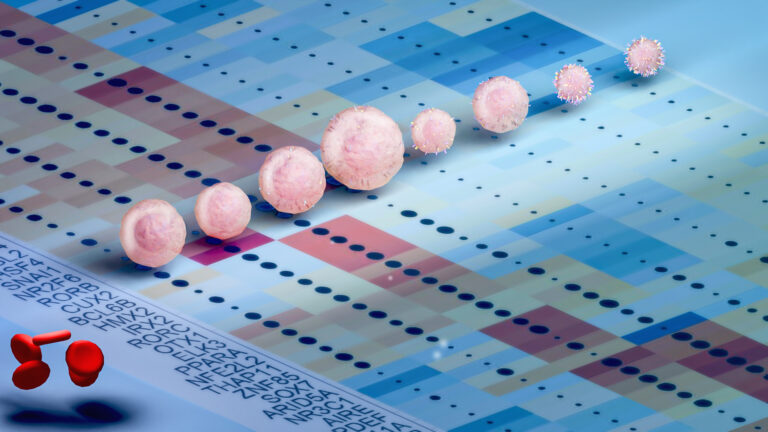Bioscience
DNA replication in humans proves slow off the mark
Textbook model of lagging-strand synthesis may be too simplistic for human DNA.

The basic mechanisms of DNA replication were long thought to be similar across complex species, but a new KAUST study shows this not to be true.
As biochemist and biophysicist Samir Hamdan and his colleagues report, the way in which one strand of the double helix gets copied is far more complex in humans than it is in baker’s yeast, the laboratory system that defines the textbook understanding of the process.
“Under isolated conditions, the two systems behave rather differently,” says Vlad-Stefan Raducanu, a former graduate student in Hamdan’s lab group.
Previous studies had suggested that other molecular actors might be involved in DNA replication in humans. But after yeast became the go-to experimental model, “many of these additional mechanisms were neglected,” Raducanu says.
Hamdan hopes his team’s study — spearheaded by joint first authors Raducanu and senior research scientist Muhammad Tehseen — will now prompt the research community to revisit the issue in greater detail.
“This current work certainly raises more questions than it answers,” Hamdan says.
A hallmark feature of DNA replication is the coordinated copying of both strands of nucleotides. This task is fairly straightforward for one strand, which gets continuously copied in the normal direction of DNA synthesis. But because the two strands of the genome are oriented in an antiparallel manner, the other DNA strand — termed the “lagging strand” — must get replicated in pieces, with the DNA-copying machinery running backwards briefly, before leapfrogging ahead and repeating the process over and over again.
This disjointed process creates what are known as Okazaki fragments, and it relies on certain enzymes. These enzymes must first elongate the short lengths of DNA, then remove initiator primers and leave behind small glueable incisions, called nicks, that are bonded together to form one long string of contiguous DNA.
In yeast, with the standard toolbelt of just a few enzymes, this process chugs along at a fairly steady clip. But when Raducanu and Tehseen tried to perform the same experiments using human enzymes and DNA instead of those from yeast, they found that everything moved at a snail’s pace.
The researchers teamed up with structural biologist Alfredo De Biasio to better understand why.
Together, their biophysical, biochemical and structural analyses showed that one enzyme does a poor job in helping another release the nicked DNA, which causes the molecular equivalent of throwing sand in the gears of lagging-strand synthesis. “Everything moves along very slowly,” Hamdan explains.
However, adding an extra enzyme into the mix — one not normally included and needed in yeast experiments — seemed to speed things up more than 10-fold.
It is unclear if that enzyme sufficiently explains the totality of the added complexity in humans. As the authors point out: “There’s a need now to further investigate additional pathways that may function on the lagging-strand to allow for efficient and accurate DNA replication in higher organisms, including humans.”
References
- Raducanu, V.S., Tehseen, M., Al-Amodi, A., Joudeh, L.I., De Biasio, A. & Hamdan, S.M. Mechanistic investigation of human maturation of Okazaki fragments reveals slow kinetics. Nature Communications 13, 6973 (2022).| article
You might also like

Bioscience
Cell atlas offers clues to how childhood leukemia takes hold

Bioscience
Hidden flexibility in plant communication revealed

Bioscience
Harnessing the unintended epigenetic side effects of genome editing

Bioscience
Mica enables simpler, sharper, and deeper single-particle tracking

Bioengineering
Cancer’s hidden sugar code opens diagnostic opportunities

Bioscience
AI speeds up human embryo model research

Bioscience
Sex chromosome overload sparks to a common developmental faultline

Bioscience




